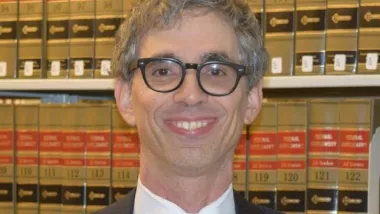In the 1990s, most public argument about suburban expansion was pretty simple. Environmentalists argued that sprawl increased pollution, while their opponents responded by invoking the free market. Environmentalists and other sprawl critics (including myself) responded that sprawl is the result less of the free market than of government subsidy and regulation. Recently I have started to notice hints of a not-so-libertarian argument for sprawl: that pro-sprawl government policies such as highway construction open up real estate for development, and thus make housing affordable.
In the 1990s, most public argument about suburban expansion was pretty simple. Environmentalists argued that sprawl increased pollution, while their opponents responded by invoking the free market. Environmentalists and other sprawl critics (including myself) responded that sprawl is the result less of the free market than of government subsidy and regulation.
Recently I have started to notice hints of a not-so-libertarian argument for sprawl: that pro-sprawl government policies such as highway construction open up real estate for development, and thus make housing affordable.
Indeed, some car-oriented, "sprawling" cities are quite affordable. On the other hand, others (such as San Diego) are quite expensive. How come?
Given that housing policies are partially a function of the availability of land, government can make land available through (1) not overregulating land supply and (2) building infrastructure to make development tempting to landowners. Governmental decisions as to where (and how much) to use these techniques determine both land prices and the extent of suburban growth.
For example, a government or set of governments could choose a pro-sprawl infrastructure policy (such as that of Houston, which has two beltways) combined with a relatively lenient (even if by no means completely libertarian) land use policy. This "cheap sprawl" policy will lead to a high land supply (and thus to low home prices) but lots of driving, thus leading to high transportation costs and greenhouse gas emissions.
A second option is "expensive sprawl": a pro-sprawl infrastructure policy combined with tight anti-density, anti-infill regulation in existing neighborhoods. This policy will lead to higher housing prices than cheap sprawl, because much of the region's land supply would be constricted by regulation. But commutes would be at least as long as in cheap sprawl, as people move to new subdivisions along new expressways in order to avoid the high housing prices in tightly regulated existing neighborhoods. And because government regulation would restrict the density of infill development, even residents of existing neighborhoods might have to do a lot of driving. So from both an environmentalist standpoint and an affordable housing standpoint, "expensive sprawl" creates the worst of both worlds: higher prices than in cheap sprawl, plus mandatory driving.
Third, a region could combine an anti-sprawl infrastructure policy and tight regulation- "expensive smart growth." Presumably, this policy would yield the lowest housing supply and thus the highest housing costs, though it might not be as environmentally toxic as my second option.
Finally, a region could limit new infrastructure to transit, but could deregulate infill development. This policy was what most American cities followed until the 1920s, and would in some ways create truly smart growth: housing prices would not be out of control because housing supply would expand to meet population growth, yet because new development would frequently be in transit-friendly aresa, transportation costs would be low too and commuting would not be a significant contributor to pollution.
The possibility of my final option shows that in principle, a city or region could achieve more compact, transit- and pedestrian-friendly development without raising housing prices. On the other hand, what makes sense in principle and what is politically easy are often two different things.

Planetizen Federal Action Tracker
A weekly monitor of how Trump’s orders and actions are impacting planners and planning in America.

Chicago’s Ghost Rails
Just beneath the surface of the modern city lie the remnants of its expansive early 20th-century streetcar system.

Amtrak Cutting Jobs, Funding to High-Speed Rail
The agency plans to cut 10 percent of its workforce and has confirmed it will not fund new high-speed rail projects.

Ohio Forces Data Centers to Prepay for Power
Utilities are calling on states to hold data center operators responsible for new energy demands to prevent leaving consumers on the hook for their bills.

MARTA CEO Steps Down Amid Citizenship Concerns
MARTA’s board announced Thursday that its chief, who is from Canada, is resigning due to questions about his immigration status.

Silicon Valley ‘Bike Superhighway’ Awarded $14M State Grant
A Caltrans grant brings the 10-mile Central Bikeway project connecting Santa Clara and East San Jose closer to fruition.
Urban Design for Planners 1: Software Tools
This six-course series explores essential urban design concepts using open source software and equips planners with the tools they need to participate fully in the urban design process.
Planning for Universal Design
Learn the tools for implementing Universal Design in planning regulations.
Caltrans
City of Fort Worth
Mpact (founded as Rail~Volution)
City of Camden Redevelopment Agency
City of Astoria
City of Portland
City of Laramie






























